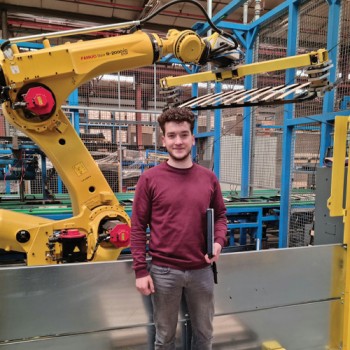Cyril
Automation Engineer
Cyril graduated as a master in industrial science electromechanics in 2019 and started his career at Moebius Consulting. He works as an automation engineer at Sedac-Mecobel.
Can you tell us about your job as automation engineer at Sedac-Mecobel?
“Sedac-Mecobel is the headquarters of the Sedac-Meral group, Europe’s leading manufacturer of metal mechanisms for sofa and convertible beds. In other words, a real rough metal factory. I mainly work for Sedac-Engineering, a daughter company that is responsible for the design of automated machines, from small charging machines to lines that transform metal into desired products.
My job is to bring the machine to life after the mechanical design process. I’m responsible for the electrical side of the story: drawing the electrical scheme, determining the necessary components, creating the program, designing the HMI, small electrical cabling work, testing and finally implementing the machine. I also provide internal support for maintenance in troubleshooting existing machines. A job that demands a lot from you, but that also brings a lot of satisfaction.”
Which skills and competences does an automation engineer need to be successful?
“Proper preparation is a must. It is desirable to encounter as few problems as possible during the start-up / construction of the machine. Each problem can incur an extra delay. It is also important to be patient and error-free because small and dumb mistakes can lead to major damage. Nobody can work flawlessly, but at least a double check is required to avoid potentially dangerous situations.
For programming and electrical design itself, experience is the greatest asset. I myself started without any experience. I went through a lot of self-study, trial and error and logical thinking to achieve the desired results. Every day I learn new things, which is nice if you are eager to learn.”

